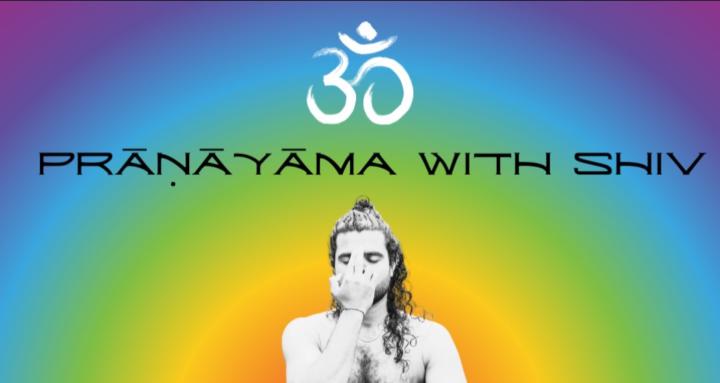Message of the day - Taken from Prana and Pranayama by Swami Niranjanananda Saraswati
What is Prana?
What makes any motion possible: the blink of an eye, the budding of a flower, the splitting of atoms or the fall of a meteor? Thousands of years ago, the yogis living in the shadow of the Himalayas fathomed the inherent quality of motion in creation and they called it prana. One may roughly translate the word prana as ‘energy’ or ‘vital force’, but neither definition offers a precise equivalent of the Sanskrit term that emerged from higher states of contemplation. The word prana assumes the quality of ‘livingness’. From the yogic point of view, the entire cosmos is alive, throbbing with prana.
Prana is ever present in every aspect of creation. The prana within every created object gives existence and material form, whether it is a planet, an asteroid, a blade of grass or a tree. If there were no prana, there would be no existence. If prana were withdrawn from the universe, there would be total disintegration. All beings, whether living or non-living, exist due to prana. Every manifestation in creation forms part of a never-ending matrix of energy particles, arranged in different densities, combinations and variations. The universal principle of prana may be in a static or dynamic state, but it is behind all existence on every plane of being from the highest to the lowest.
Prana is the simplest as well as the most profound concept propounded by the seers. A stone worshipped sincerely may have a finer quality of prana than the force of a leopard in full flight. The tangible strength that enables the movement of one’s hand is prana and the intangible force invoked through a complex fire ritual is also prana. The wind blows and rivers flow because of prana. Aircrafts, trains and cars move because of prana; laser beams and radio waves travel because of prana. Every object in creation is floating in the vast, all-encompassing sea of prana, and receiving everything they need to exist from it. It is said in the Kathopanishad (2:3:2):
यदिेदं किं च जगत्सर्वं प्राण एजति निःसृतम्।
This whole world – whatever there is – vibrates having originated from prana.
This cosmic prana, also called mahaprana, came into being at the time of creation. Thus, in order to fully understand prana, one must go back to the beginning of creation.
Universal prana
At the very beginning, there was nothing, not even creation. What existed was an all-pervasive, unmanifest consciousness, known in the scriptures as Para Brahman. It contained within it all the qualities and components necessary for creation. The whole universe lay infinitely contracted in it as mere potency; prana remained completely absorbed in it as if in a union of deep embrace. It was a state of perfect equilibrium and harmony.
In this utter stillness, there is a movement. The tantric and vedic literatures state that a desire arose in that absolute principle: Ekoham bahusyam – “I am one, let me become many.” The desire is the first creative impulse, which results in ‘willing’. The willing of the unmanifest consciousness causes the first spandan, vibration, and energy issues forth. It is the first movement: the first moment of becoming from being, the first manifestation of prana.
This primal energy, called mahaprana, is variously known as mahashakti, mahamaya, the cosmic creatrix or the Cosmic Mother. Prana was never separate from consciousness; it existed eternally as potential in consciousness, but now it assumed itself. Thus energy and consciousness began to interact with each other. They indulged in cosmic play, lila, which caused srishti, creation. The awakening of mahaprana was like a self-projection of the ‘I-ness’ of the infinite consciousness – the unchanging consciousness could experience itself through the movement of prana. In the course of time, modifications took place in the states of consciousness and energy, and with each modification a different level of creation came into being. Different levels of existence manifested: beings and matter, elements and energies, light and dark, positive and negative, animate and inanimate, male and female. Together, consciousness and energy expanded the universe, and at the end of every age dissolved it, gathering the universe back into themselves.
The many subtleties of prana and chitta (consciousness) are the ladders of all spiritual practices, the ultimate rung being involution to the state where all that exists is pure consciousness. This is the process of going back to the ‘source’.
Play of prana and chitta
चलो वाते चलं चित्तं निश्चले निश्चलं भवेत।योगी स्थाणुत्वमाप्नोति ततो वायुनिरोधतः।।
When prana moves, chitta (consciousness) moves.When prana is without movement, chitta is without movement.
Hatha Yoga Pradipika (2:2)
4
2 comments
powered by

skool.com/pranayama-with-shiv-7892
Namaste and welcome to the Pranayama with Shiv Yoga club!
We're on a mission to spread Yoga for a happier and more fun life and world.
Suggested communities
Powered by
